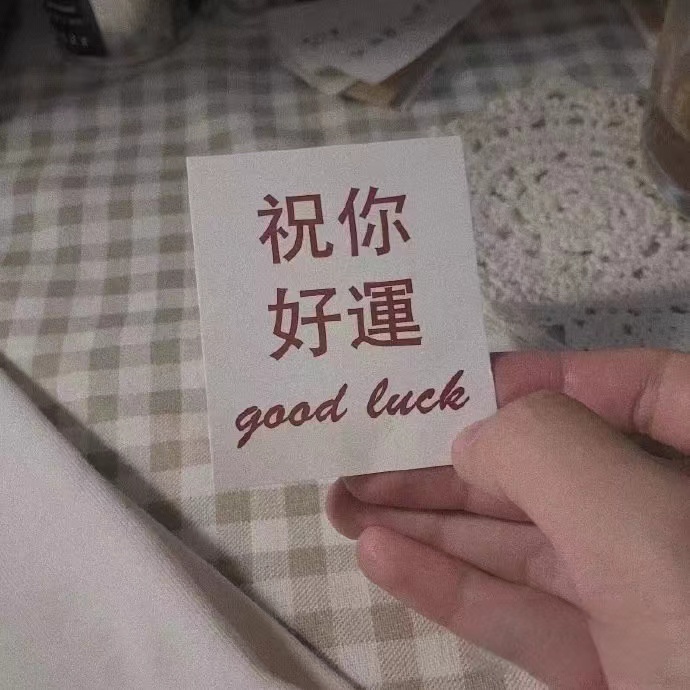作者: sleppygod
日期: 10-7
也许 不负光阴就是最好的努力 而努力就是最好的自己

c++入门
1.c++的关键字
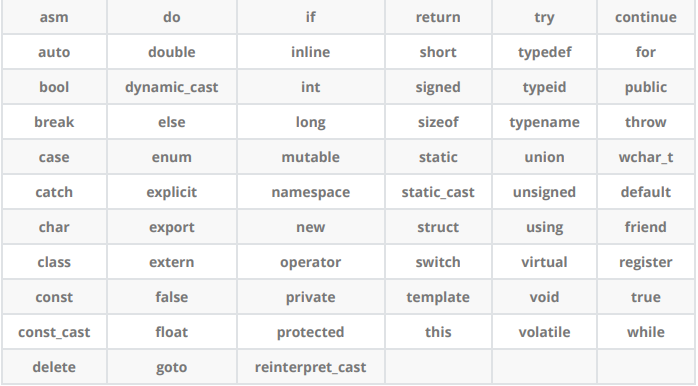
就简单看看,有个大概印象就行,在后面的博客中会慢慢讲解
2.命名空间
在C/C++中,变量、函数和后面要学到的类都是大量存在的,这些变量、函数和类的名称将都存 在于全局作用域中,可能会导致很多冲突。使用命名空间的目的是对标识符的名称进行本地化, 以避免命名冲突或名字污染,namespace关键字的出现就是针对这种问题的。
example:
#include<stdio.h>
#include<stdlib.h>
namespace bit
{
int rand = 10;
int x = 1;
}
void func()
{
printf("%d ", ::rand);
printf("%d ", bit::x);
}
int main()
{
func();
return 0;
}

在命名空间bit里面的两个变量rand和x均为全局变量.命名空间不影响变量生命周期,只是限定域,编译查找规则.
第一个rand在头文件里面找,因为rand()是一个函数,所以输出的rand()的地址,x是在bit命名空间里面找,所以输出10
如果改为bit::rand则输出值为10;
当有多个命名空间时,相同的命名空间会合并.
命名空间的使用:
#define _CRT_SECURE_NO_WARNINGS 1
#include<iostream>
using std::cin;
using std::cout;//using namespace std(把命名空间隔离墙拆了)
namespace bit
{
int rand = 10;
int x = 1;
}
void func()
{
cout << bit::x << std::endl;
}
int main()
{
func();
return 0;
}
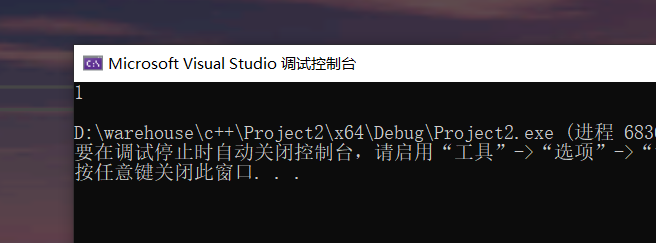
使用部分展开,可以取得不错的效果
cout << bit::cout << std::endl;
这里简单提及一下c++的输入输出.输入cin,输出cout 包含在头文件 <iostream>以及命名空间 std中
<<是流插入运算符,>>是流提取运算符.后面再具体讲述.
3.缺省参数
缺省参数是声明或定义函数时为函数的参数指定一个缺省值。在调用该函数时,如果没有指定实 参则采用该形参的缺省值,否则使用指定的实参。
example:
#define _CRT_SECURE_NO_WARNINGS 1
#include<iostream>
using std::cin;
using std::cout;
namespace bit
{
int cout = 10;
int x = 1;
}
void func(int x=10)
{
cout << x << std::endl;
}
int main()
{
func();
func(1);
return 0;
}
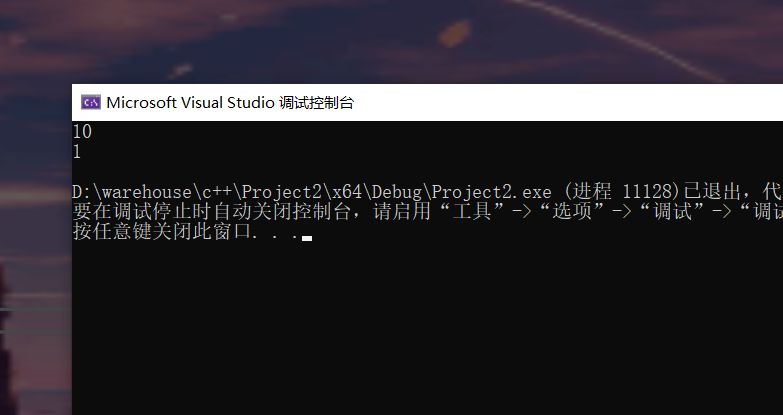
全缺省函数 example:
#define _CRT_SECURE_NO_WARNINGS 1
#include<iostream>
using std::cin;
using std::cout;
namespace bit
{
int cout = 10;
int x = 1;
}
void func(int x=1,int b=10,int c=100)
{
cout << x << std::endl;
cout << b << std::endl;
cout << c << std::endl;
}
int main()
{
func();
return 0;
}
半缺省函数 example:
#define _CRT_SECURE_NO_WARNINGS 1
#include<iostream>
using std::cin;
using std::cout;
namespace bit
{
int cout = 10;
int x = 1;
}
void func(int x,int b=10,int c=100)
{
cout << x << std::endl;
cout << b << std::endl;
cout << c << std::endl;
}
int main()
{
func(12);
return 0;
}
//第二个
#define _CRT_SECURE_NO_WARNINGS 1
#include<iostream>
using std::cin;
using std::cout;
namespace bit
{
int cout = 10;
int x = 1;
}
void func(int x,int b=10,int c=100)
{
cout << x << std::endl;
cout << b << std::endl;
cout << c << std::endl;
}
int main()
{
func(12,11);
return 0;
}
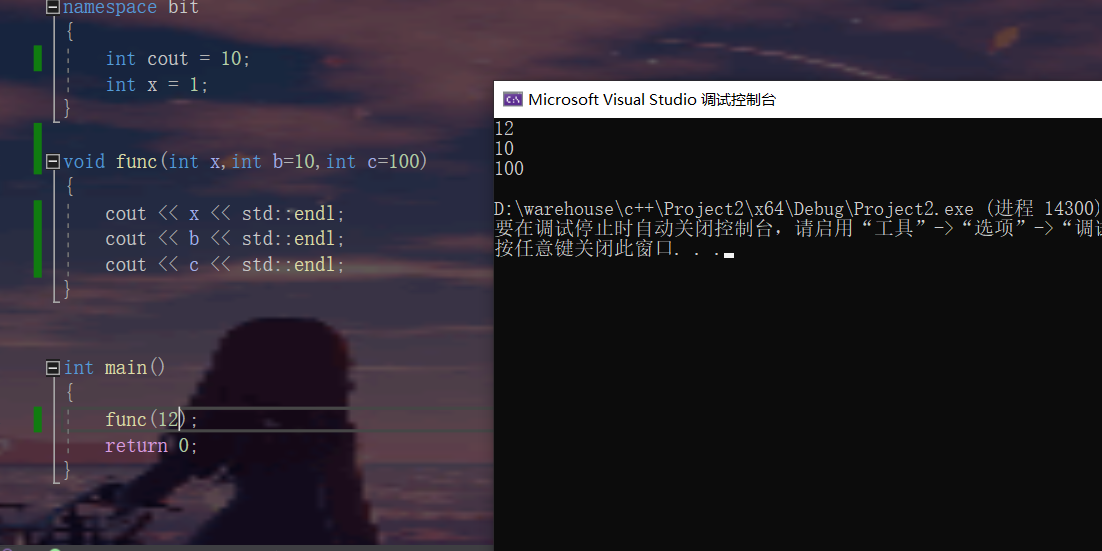
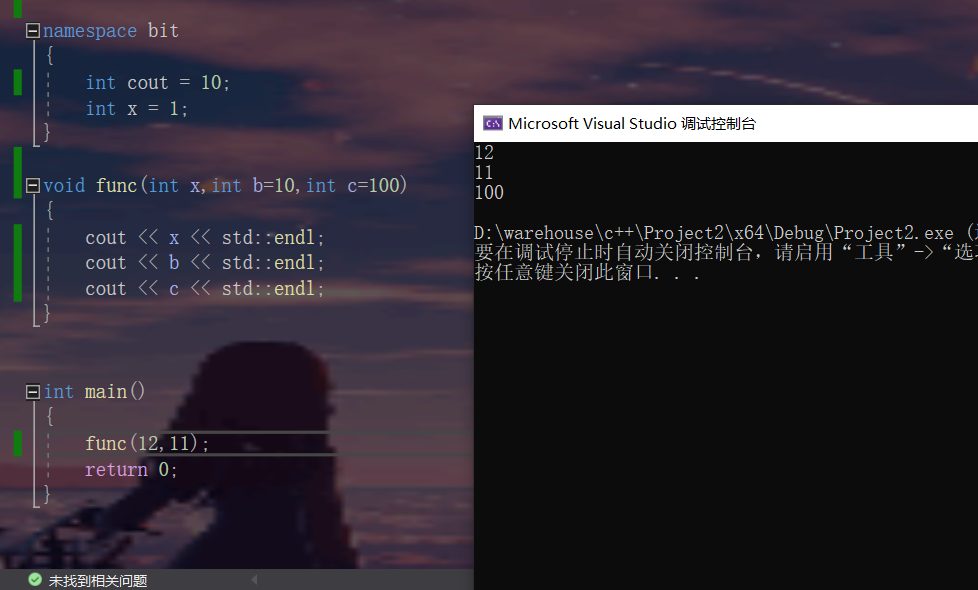
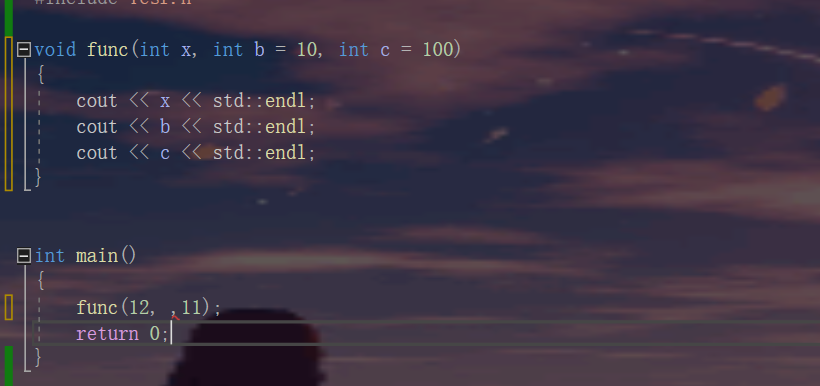

半缺省必须从右往左给出,不能依次给.且传值必须从右向左.
缺省参数不能在函数声明和定义中同时出现

解决方案,只要在一处出现缺省函数即可
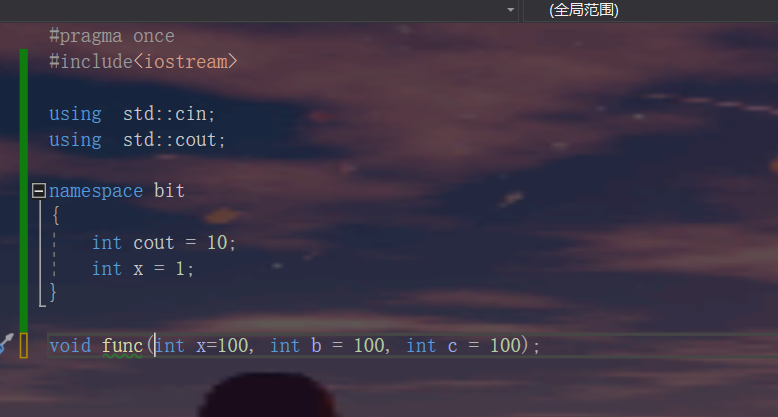
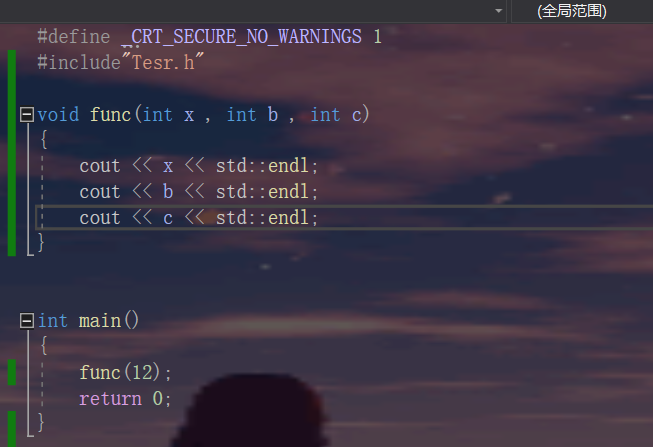
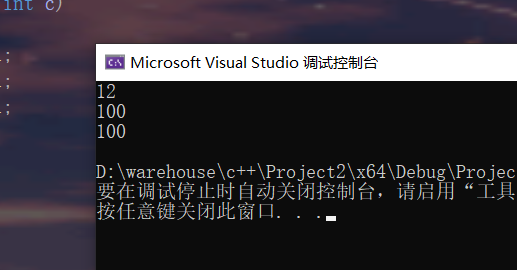
缺省函数在.h定义,否则报错.
4.函数重载
函数重载:是函数的一种特殊情况,C++允许在同一作用域中声明几个功能类似的同名函数,这 些同名函数的形参列表(参数个数 或 类型 或 类型顺序)不同,常用来处理实现功能类似数据类型 不同的问题。
example:
#define _CRT_SECURE_NO_WARNINGS 1
#include"Tesr.h"
int add(int x, int y)
{
return x + y;
}
double add(double x, double y)
{
return x + y;
}
int main()
{
cout << add(1, 10) << ' ' << add(1.1, 10.0);
return 0;
}
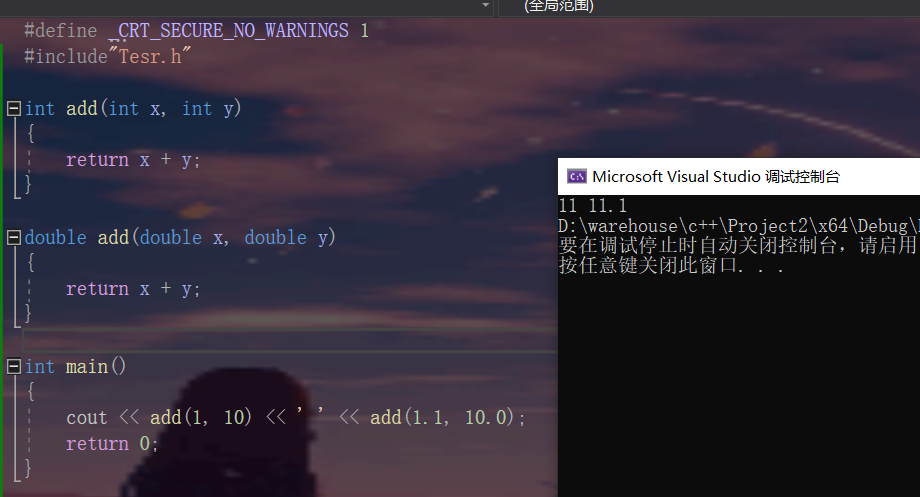
函数重载会让写代码舒服很多.
#include<iostream>
using namespace std;
// 1、参数类型不同
int Add(int left, int right)
{
cout << "int Add(int left, int right)" << endl;
return left + right;
}
double Add(double left, double right)
{
cout << "double Add(double left, double right)" << endl;
return left + right;
}
// 2、参数个数不同
void f()
{
cout << "f()" << endl;
}
void f(int a)
{
cout << "f(int a)" << endl;
}
// 3、参数类型顺序不同
void f(int a, char b)
{
cout << "f(int a,char b)" << endl;
}
void f(char b, int a)
{
cout << "f(char b, int a)" << endl;
}
int main()
{
Add(10, 20);
Add(10.1, 20.2);
f();
f(10);
f(10, 'a');
f('a', 10);
return 0;
}
就以上三种情况可以实现重载.后期会细节讲解函数重载原理
函数重载无法通过返回值类型划分, 例如 double add(int x,int y) int add(int x,int y)当调用函数时
add(10,20)就无法判断使用哪个函数
5.引用
c++重要之一,引用
引用不是新定义一个变量,而是给已存在变量取了一个别名,编译器不会为引用变量开辟内存空 间,它和它引用的变量共用同一块内存空间。
int main()
{
int a = 10;
int& x = a;
x = 100;
cout << x;
return 0;
}
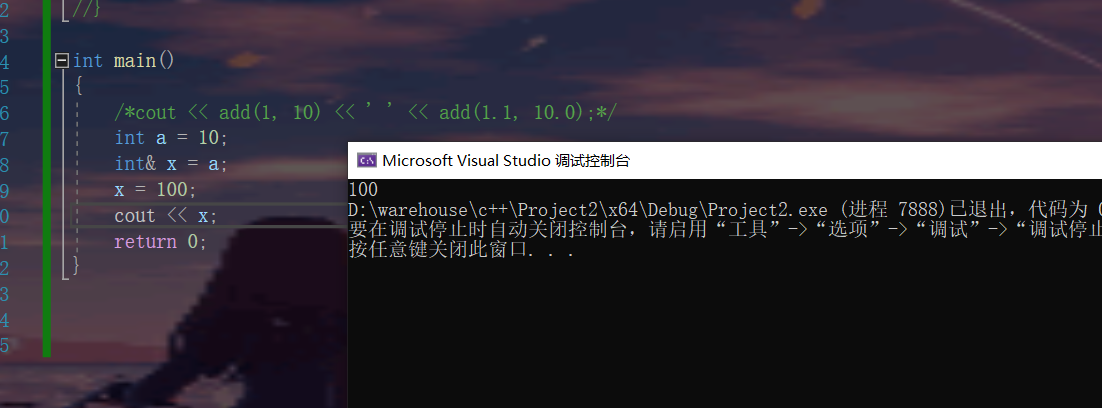
引用必须初始化,且引用一旦引用一个实体,再不能引用别的实体.

void TestConstRef()
{
const int a = 10;
//int& ra = a; // 该语句编译时会出错,a为常量
const int& ra = a;
// int& b = 10; // 该语句编译时会出错,b为常量
const int& b = 10;
double d = 12.34;
//int& rd = d; // 该语句编译时会出错,类型不同
const int& rd = d;
}
引用的作用:
1.输出型参数
void swap(int&a,int&b)
{
int tmp = a;
a = b;
b = a;
}
int main()
{
int a = 10;
int b = 20;
cout << a << ' ' << b << std::endl;
swap(a, b);
cout << a << ' ' << b << std::endl;
return 0;
}
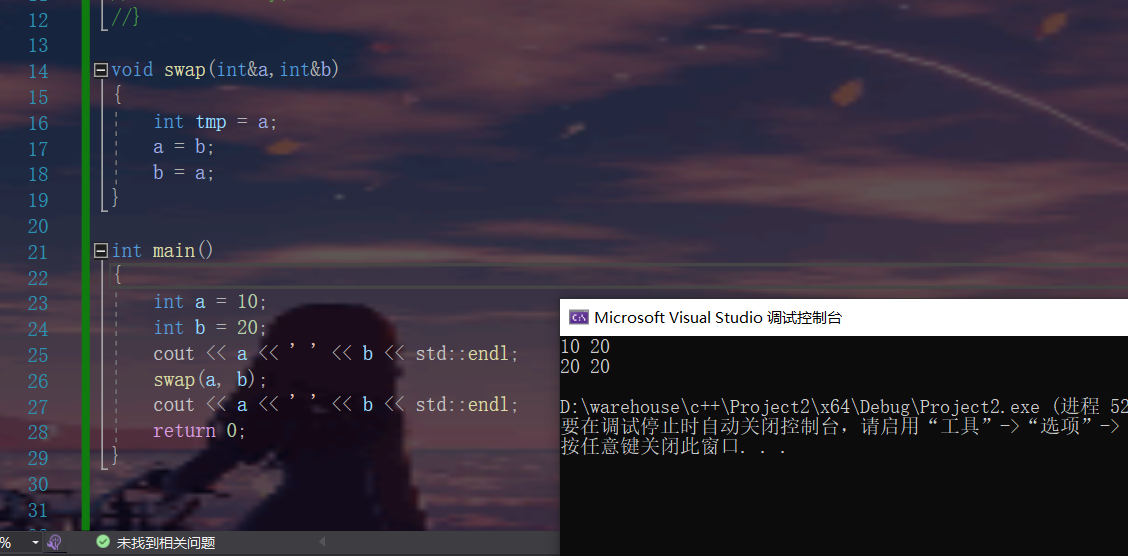
2.返回输出型参数
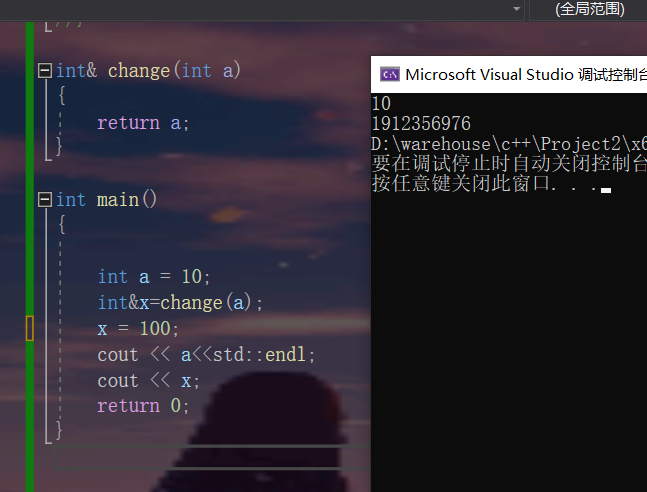
在charg函数中,将变量的地址传给x,函数调用结束,函数栈帧销毁,但是该地址存在,所以x值时随机值
int& change(int a)
{
static int b = 0;
return b;
}
int main()
{
int a = 10;
int&x=change(a);
x = 100;
cout << a<<std::endl;
cout << x;
return 0;
}
如果函数返回时,出了函数作用域,如果返回对象还在(还没还给系统),则可以使用 引用返回,如果已经还给系统了,则必须使用传值返回。
传引用返回与传值返回相比 效率更高 因为传值返回需要临时拷贝
#include <time.h>
struct A { int a[10000]; };
A a;
// 值返回
A TestFunc1() { return a; }
// 引用返回
A& TestFunc2() { return a; }
void TestReturnByRefOrValue()
{
// 以值作为函数的返回值类型
size_t begin1 = clock();
for (size_t i = 0; i < 100000; ++i)
TestFunc1();
size_t end1 = clock();
// 以引用作为函数的返回值类型
size_t begin2 = clock();
for (size_t i = 0; i < 100000; ++i)
TestFunc2();
size_t end2 = clock();
// 计算两个函数运算完成之后的时间
cout << "TestFunc1 time:" << end1 - begin1 << std::endl;
cout << "TestFunc2 time:" << end2 - begin2 << std::endl;
}
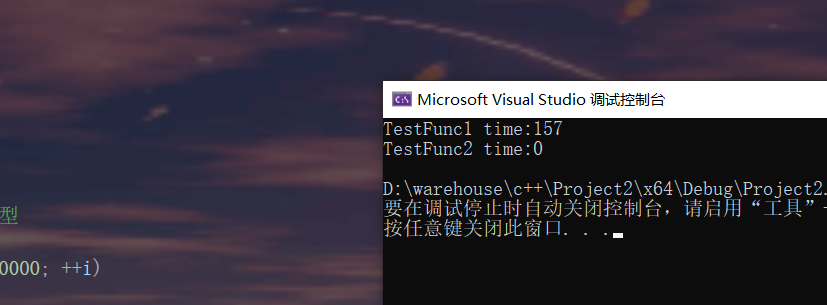
引用和指针的不同点:
- 引用概念上定义一个变量的别名,指针存储一个变量地址。
- 引用在定义时必须初始化,指针没有要求
- 引用在初始化时引用一个实体后,就不能再引用其他实体,而指针可以在任何时候指向任何 一个同类型实体
- 没有NULL引用,但有NULL指针
- 在sizeof中含义不同:引用结果为引用类型的大小,但指针始终是地址空间所占字节个数(32 位平台下占4个字节)
- 引用自加即引用的实体增加1,指针自加即指针向后偏移一个类型的大小
- 有多级指针,但是没有多级引用
- 访问实体方式不同,指针需要显式解引用,引用编译器自己处理
- 引用比指针使用起来相对更安全
内联函数
以inline修饰的函数叫做内联函数,编译时C++编译器会在调用内联函数的地方展开,没有函数调 用建立栈帧的开销,内联函数提升程序运行的效率。c++没有宏,用内联函数替代
内联函数特性:
- inline是一种以空间换时间的做法,如果编译器将函数当成内联函数处理,在编译阶段,会 用函数体替换函数调用,缺陷:可能会使目标文件变大,优势:少了调用开销,提高程序运 行效率。
- inline对于编译器而言只是一个建议,不同编译器关于inline实现机制可能不同,一般建 议:将函数规模较小(即函数不是很长,具体没有准确的说法,取决于编译器内部实现)、不 是递归、且频繁调用的函数采用inline修饰,否则编译器会忽略inline特性。
- inline不建议声明和定义分离,分离会导致链接错误。因为inline被展开,就没有函数地址 了,链接就会找不到。
宏的优缺点?
- 优点:
-
- 增强代码的复用性。
- 提高性能。
- 缺点:
-
- 不方便调试宏。(因为预编译阶段进行了替换)
- 导致代码可读性差,可维护性差,容易误用。
- 没有类型安全的检查 。
- C++有哪些技术替代宏?
-
- 常量定义 换用const enum
- 短小函数定义 换用内联函数
内联函数开启方式
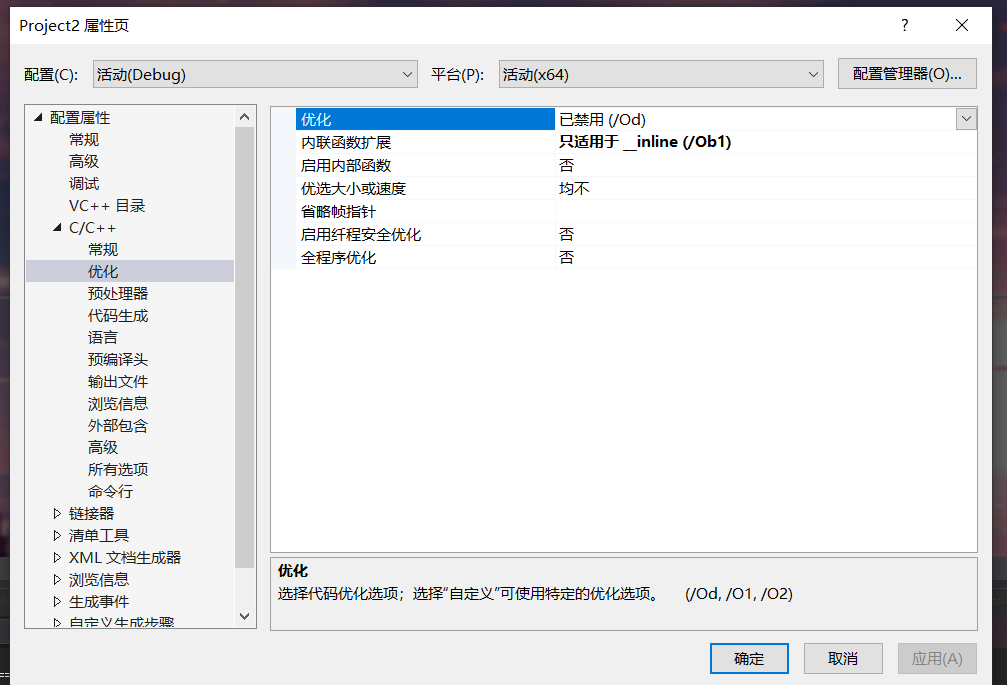
6.auto关键词
int main()
{
int x = 10;
auto a = &x;
auto* b = &x;
auto& c = x;
cout << typeid(a).name() << endl;
cout << typeid(b).name() << endl;
cout << typeid(c).name() << endl;
*a = 20;
*b = 30;
c = 40;
return 0;
}
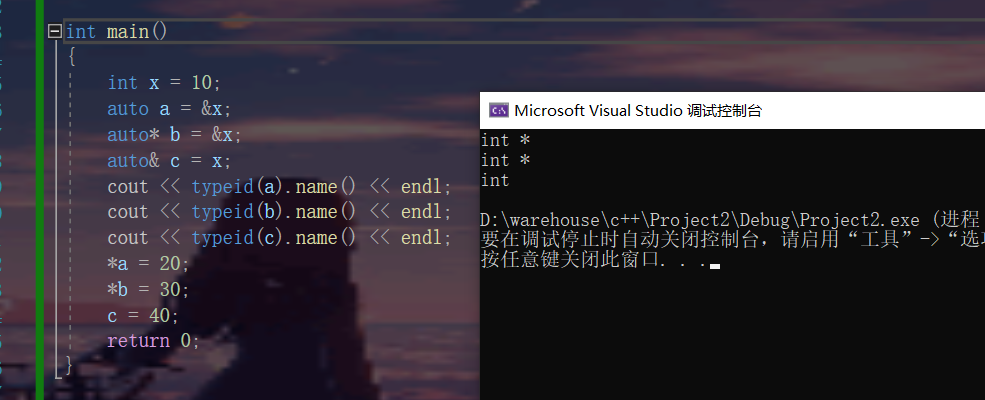
auto具体使用后期会具体讲解,现在只是了解即可.
for(auto e:array)遍历数组
